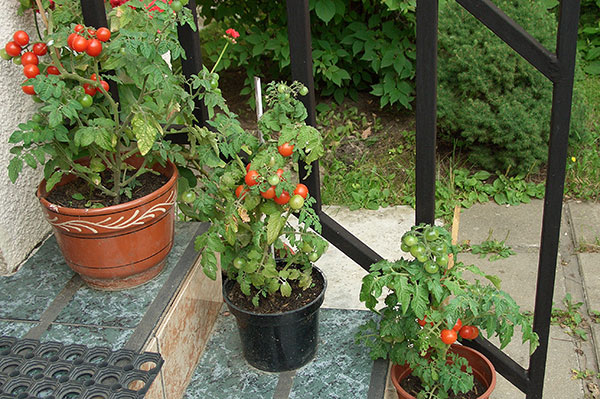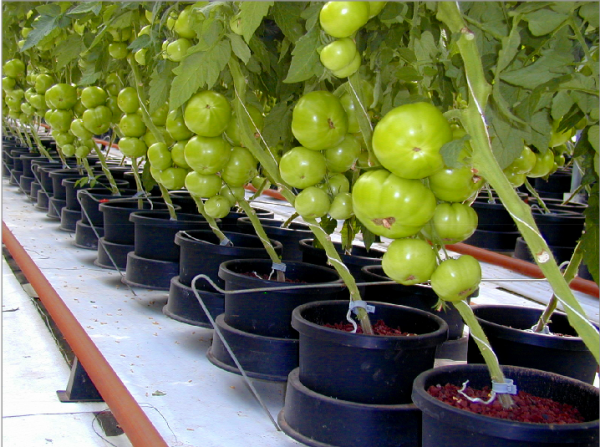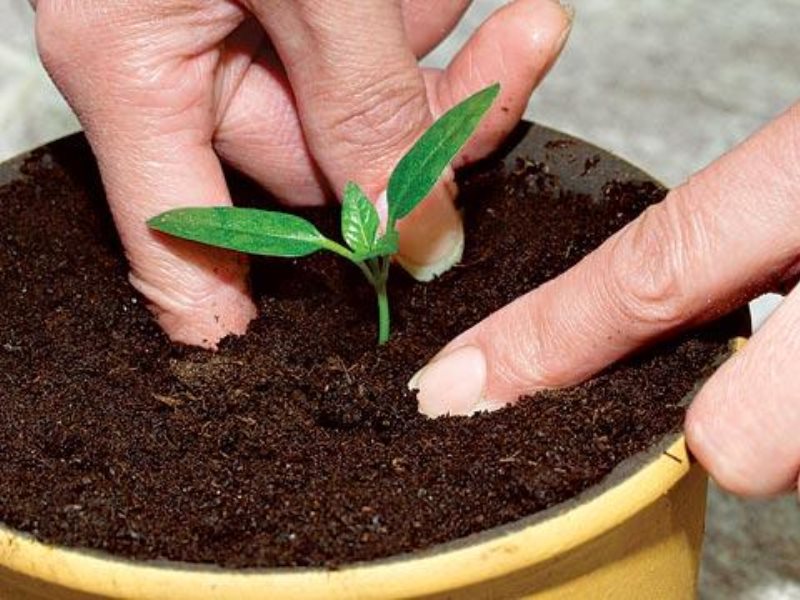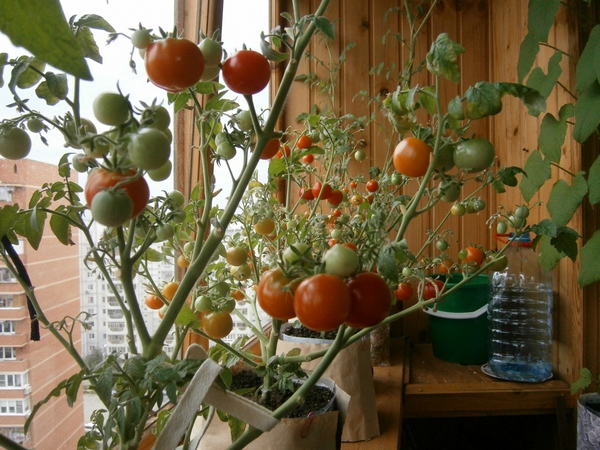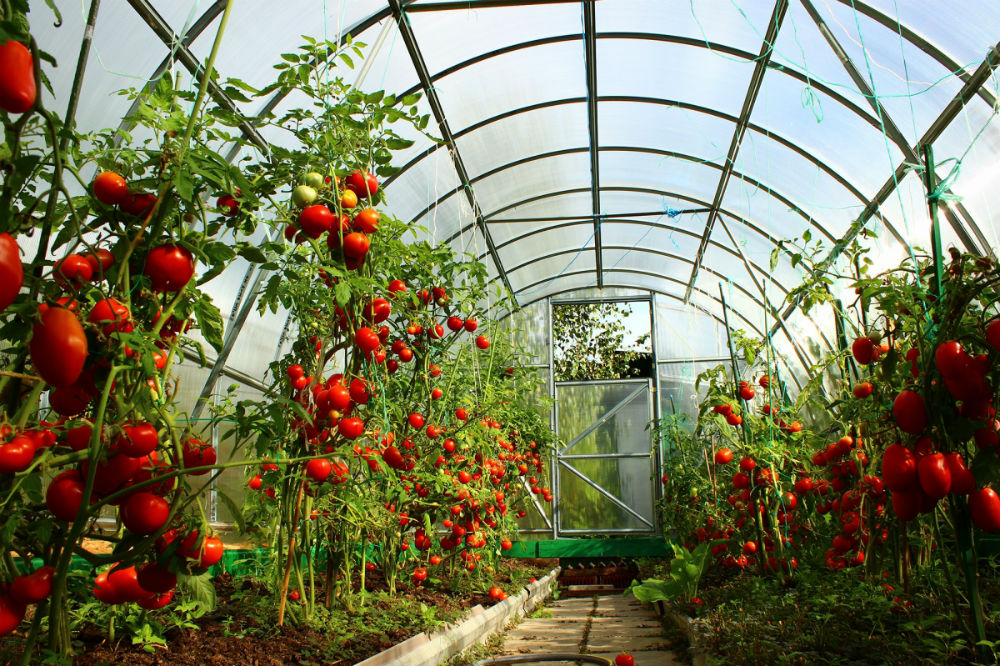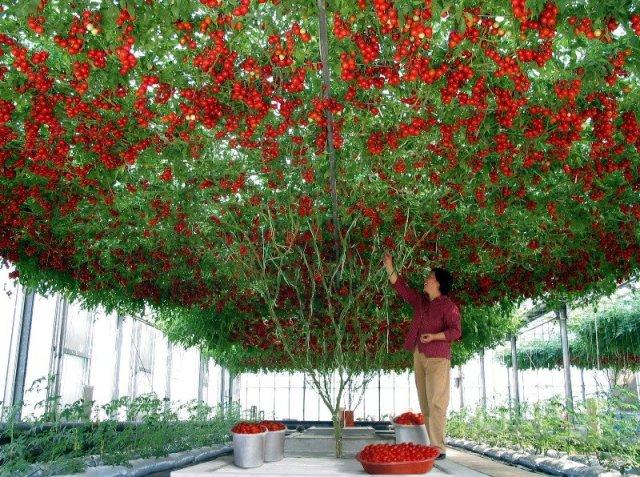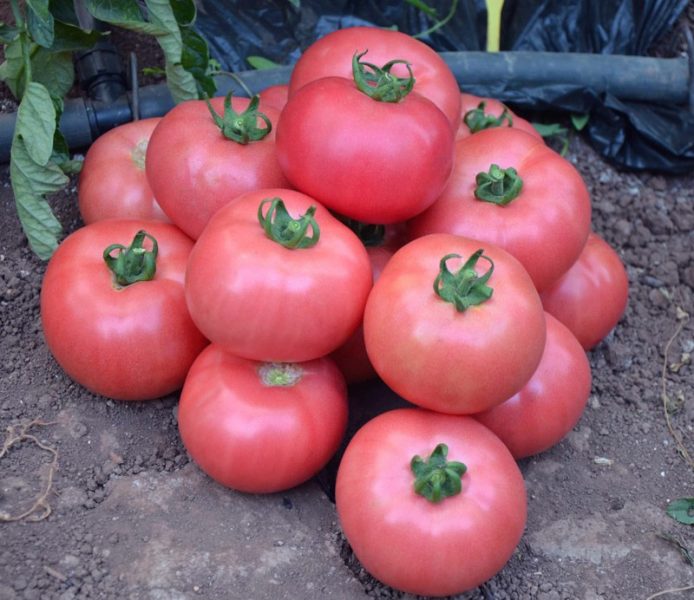Content:
Growing tomatoes in a confined space is a simple process, generally similar to growing crops in open ground or a greenhouse: they take seeds of suitable varieties, grow seedlings, and transplant. Growing tomatoes in pots on the street or at home - on a windowsill or balcony - is sometimes easier than in a summer cottage.
How to plant and grow a tomato in a pot
There is no special secret, there are few differences from the cultivation of ground and greenhouse fruits. How to grow potted tomatoes:
- Select varieties based on the growing conditions.
- Get healthy, robust seedlings.
- Choose the optimal planting container and location.
- Water in a timely manner, follow the feeding schedule.
- Form a bush if the variety requires it.
- Protect against diseases and pests.
Preparing for landing
The process consists of several stages: selection of a variety, selection of capacity, selection of location.
Variety selection
Varieties that meet the following criteria can be grown in pots:
Bush size - height, span of the crown. If the cultivation of tomatoes in pots is planned on the street - a summer cottage, these sizes do not have a significant effect, it will only be important to correctly choose the volume of the container. For home growing, this is the determining factor, because the plant needs space.
The height of the plant also matters - there is no point in growing the 4-meter De Barao stretching up on the windowsill, but it would be quite appropriate to place containers with it around the gazebo in the country house or on the open loggia of a city apartment.
Fruit size. It is tempting to plant a giant tomato weighing over half a kilogram in a pot. But only one will mature, for a larger bush, whose root system is rigidly limited by the walls of the container, will not be able to. It is optimal to choose such plants whose fruit weight does not exceed 40-50 g. It is not particularly important whether the variety is specially designed for container cultivation or not, especially if the container will stand on the balcony or on the country lawn.
If we are talking about the windowsill of a city apartment, preference should be given to container varieties of the cherry group. They form compact bushes with medium-sized fruits weighing up to 30 g.
Illumination. If there is not enough light at the intended location, the choice should be stopped on cherry blossoms that mature successfully even with a lack of lighting. Although all tomatoes belong to plants with a short daylight hours, this does not mean at all that it is permissible to put them in a corner where the sun is 15 minutes a day.
Maturation time. For the southern regions, the choice is wide - from early (for indoor, balconies) to late (for outdoor cultivation). In temperate climates, the choice is limited to varieties that ripen in the early and middle periods (up to 100 days). The same applies to indoor tomatoes grown in winter.
The best varieties of homemade tomatoes:
- Pearl Red;
- The pearl is yellow;
- Room surprise;
- Bonsai;
- Balcony miracle;
- Japanese dwarf;
- Mini Gold;
- Thumbelina;
- Leopold;
- Baby;
- Pygmy;
- Bonsai Micro.
The list is far from complete, the number of cherry varieties that can be grown on the windowsill has long exceeded a hundred.
Small-fruited varieties intended for open ground, for example, Snegiryok, Button, are also grown as a balcony culture.
Which pot to choose
First of all, the capacity must be stable. Sleek pots with a narrow bottom and wide top are not suitable for solid tomatoes.
How much pot volume is needed for tomatoes is determined by the height of the bush (indicated on the seed bags). The roughest estimate is 1 liter of soil for every 10 cm of height. The rule is true for cherry, if the fruits are larger, add another 1 to 5 liters.
The material of the pot can be anything - plastic, ceramics, wooden tub. However, due to changes in daylight hours, containers often have to be moved to another location. It is rather difficult to rearrange a 20-liter outdoor clay pot or a 50-liter wooden barrel, it is better to choose plastic. And for home cherry you can take ceramics.
Seat selection
Definitely, the more sun the tomatoes get, the better they will taste. Therefore, for growing tomatoes in pots at their summer cottage, southern directions are chosen. Window sills and balconies of east, south or west orientation are suitable for tomatoes in the apartment.
Planting tomatoes in pots
First of all, seedlings are grown. The process goes on as usual.
For sowing, it is preferable to use peat tablets. Several specimens are usually grown in pots, and this will not hit the pocket hard. You can plant each seed in a separate small cup or use the traditional method of waiting for the seedlings to appear in the seedling boxes. The whole procedure is similar to growing seedlings for greenhouses and open ground.
Room terms are determined less strictly. Most often, indoor tomatoes are sown in two periods - from mid-July to mid-August to diversify the New Year's table with fresh tomatoes, and from mid-November to mid-December to replenish the vitamin deficiency in early spring.
Care of seedlings, their picking, hardening also proceed in the standard mode.
At the stage of 5-6 leaves, or better with the appearance of the first flowers, the seedlings are transplanted to a permanent place - in containers intended for it.
The soil is taken universal, adding sand, vermiculite or peat to it (1:10 to the main volume of the soil). In order to further avoid diseases in the tomato mini-kingdom, the soil is first spilled with boiling water or a manganese solution. Fertilizers are often added, but it is better not to do this: the crumbs actively begin to grow, gain mighty tops, forgetting about the formation of flower brushes.
Recommendations for growing potted tomatoes at home and outdoors
Having planted a grown seedling in a pot, for example, a red potted tomato, it will be clear how to grow it correctly, especially if there is experience in growing a crop on the site.
Watering
Watered daily in the morning with warm, settled water. Approximate consumption per 1 liter of soil:
- for street tomatoes about 70 ml;
- balcony - 50 ml;
- indoor - 35-40 ml.
In extreme heat, if the leaves droop in the evening, re-moisten the soil. The amount of water is reduced by 2 times.
After watering, the soil is loosened and the plants are slightly spud. It is enough to carry out the procedure every 3-4 days.
Top dressing
Fertilizers are applied weekly in liquid form, combined with irrigation. Top dressing options:
- Potassium sulfate - 1 mg, urea - 1 g, superphosphate - 5 g per liter of water;
- Mullein - at the rate of 1 part of fertilizer for 5 parts of water;
- Bird droppings - 1 part of droppings to 15 parts of water.
Fertika (Kemira) and Agricola complex fertilizers, applied strictly in accordance with the instructions, give a good result.
It is most convenient to add liquid biohumus once a week to irrigation water, containing the main nutrients in an optimal ratio. For 1 liter of water, take 1 tsp. fertilizers.
Protection against diseases and pests
With strict adherence to the rules of cultivation, potted tomatoes practically do not get sick. However, some preventive measures must be taken. As a preventive measure, they use:
- garlic infusion (watering and / or spraying);
- watering with the addition of several crystals of potassium permanganate;
- spraying with "Fitosporin".
Prevention is carried out every 10-15 days.
Tomatoes growing in large pots outdoors are attacked by the same pests as those grown in garden beds. They are fought with the usual methods. Pests practically do not threaten balcony tomatoes, unless they are brought by the wind. They are usually disposed of by mechanical methods - they are collected by hand and destroyed. If the introduction of larvae of mining insects into the leaves is noticed, the affected leaves are cut off and destroyed.
For indoor cherry trees, the greatest threat is posed by:
- Spider mite, which is active in dry air, especially in winter. Prevention methods: maintaining humidity at the required level (60%) using air humidifiers or placing bowls of water next to plants.
- Midges that start up with excessive watering against a background of low temperatures (whiteflies, podura, sciarids).
In a confined space, the bio-insecticide "Bona Forte" is used to control insects, which shows excellent results in the fight against most pests characteristic of indoor plants, especially in the initial stages of destruction.
How to shape potted tomatoes
As a rule, there is no need to pinch container varieties of tomatoes. If other types are grown, they are formed into 2 stems, the rest of the stepsons are removed according to the usual rules.
Armed with the knowledge of how to grow tomatoes in an apartment, on a balcony or on a summer cottage that is not suitable for growing tomatoes, lovers of healthy fruits to some extent decide the issue of providing themselves with vitamins and nutrients. The harvest from potted tomatoes is not large enough to fully cover the needs of the family, but it brings more joy and aesthetic pleasure than going to the market.
